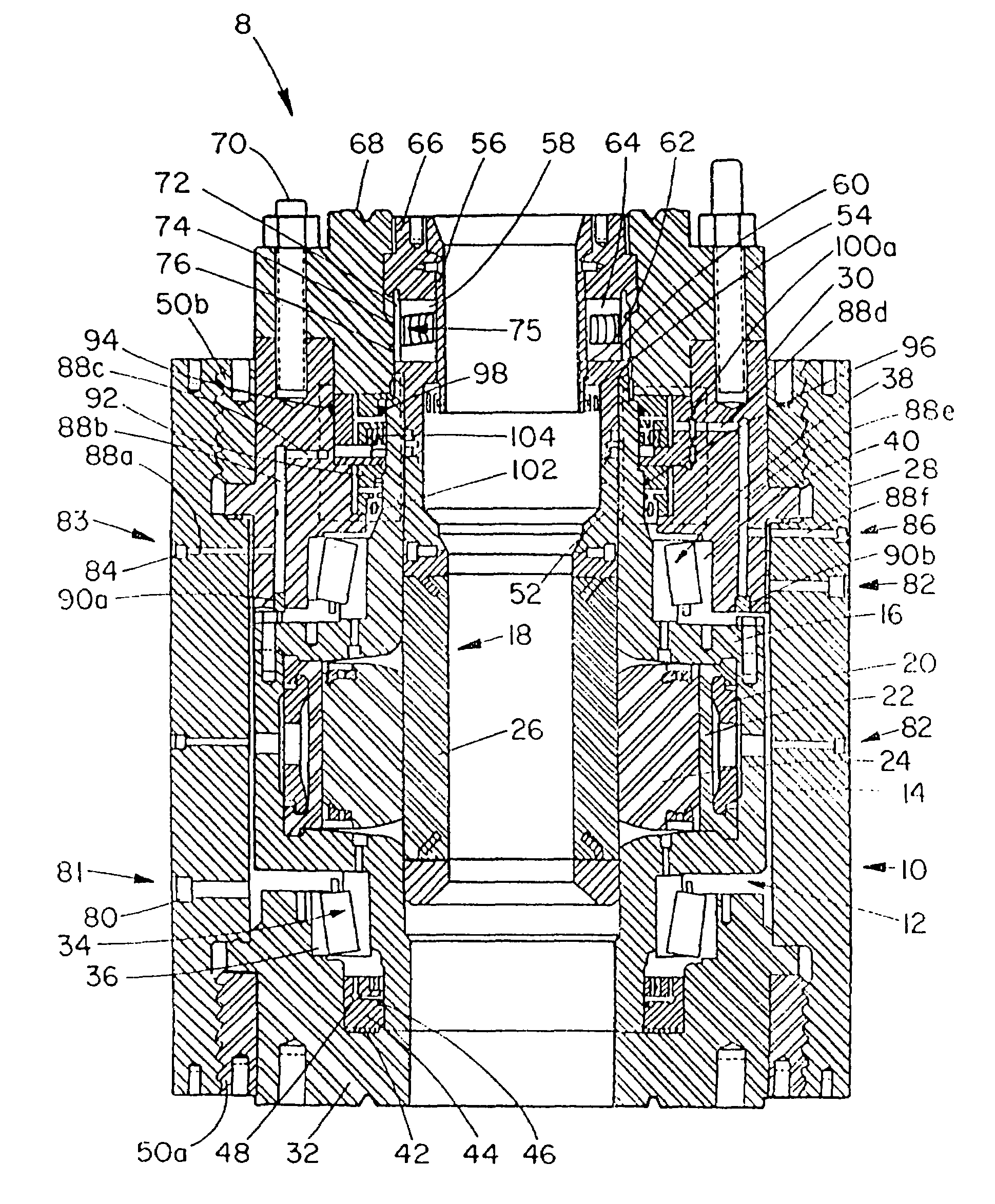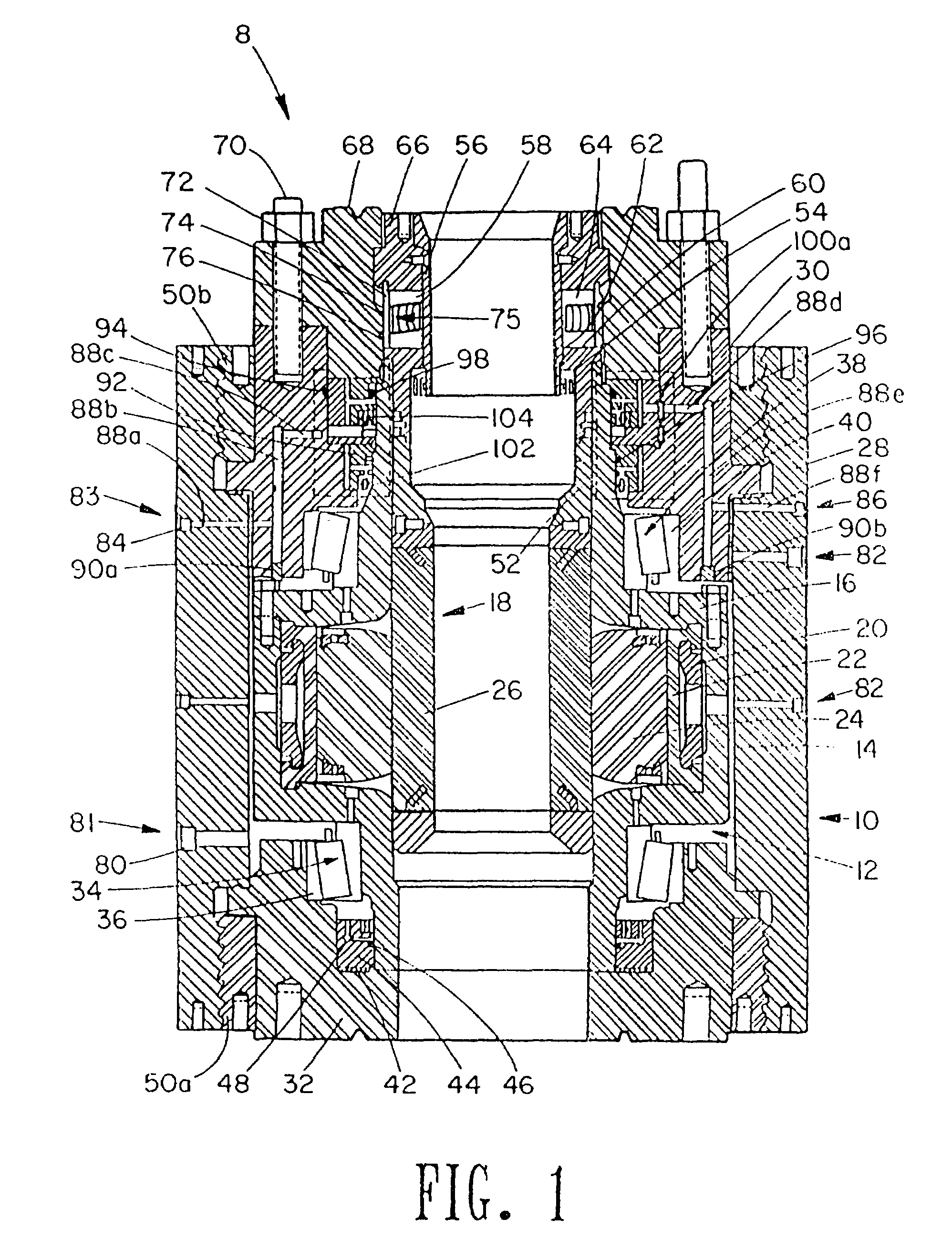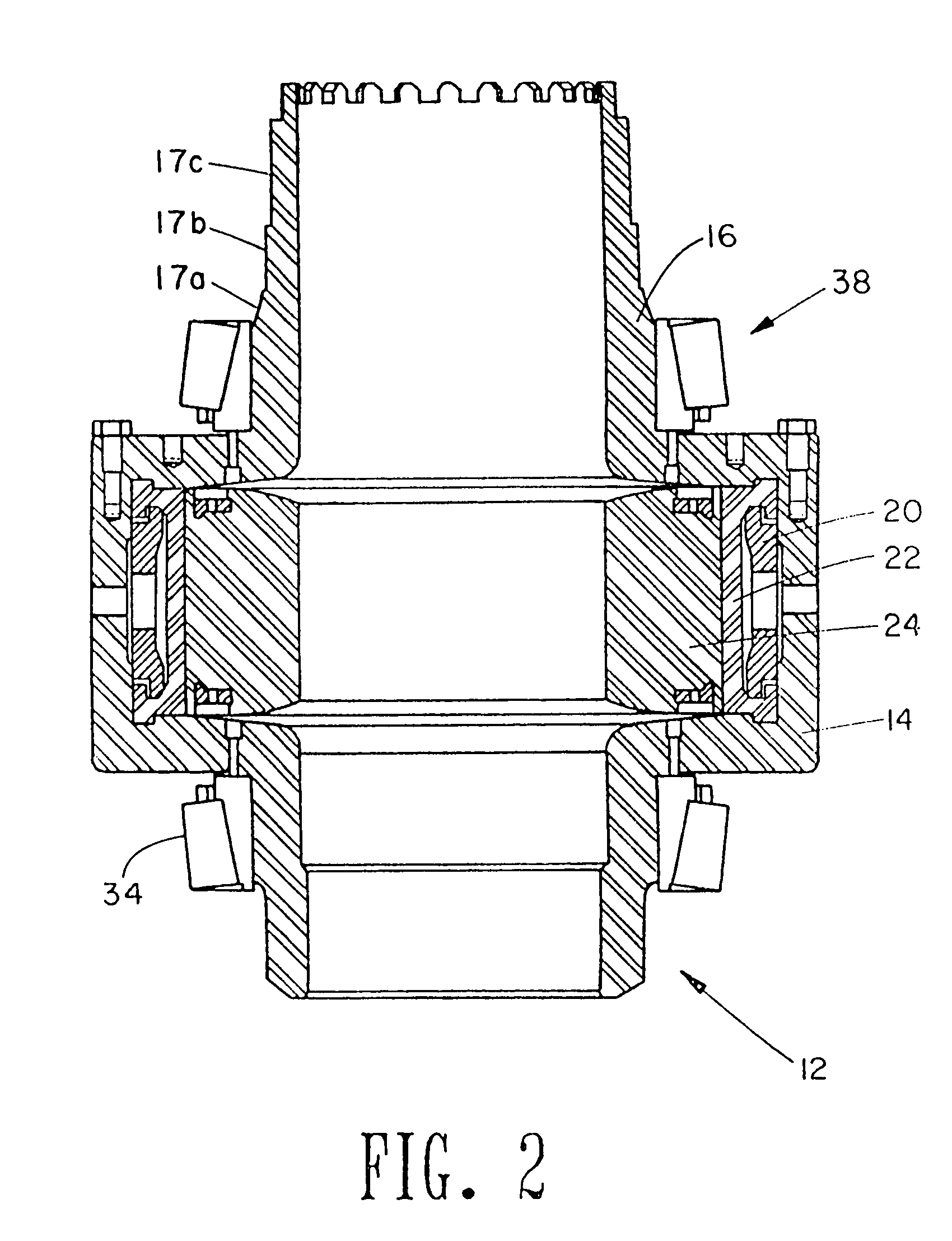Rotating blowout preventer with independent cooling circuits and thrust bearing
a technology of rotating blowout preventer and independent cooling circuit, which is applied in the direction of packaging, closures, and fluid removal. it can solve the problems of affecting the wear rate of seals
- Summary
- Abstract
- Description
- Claims
- Application Information
AI Technical Summary
Benefits of technology
Problems solved by technology
Method used
Image
Examples
Embodiment Construction
[0016]Referring to FIGS. 1 and 2, the rotating blowout preventer 8 generally includes a stationary body 10 which houses a rotating body 12. The rotating body 12 includes a rotating housing 14, a rotating housing cover plate 16 and a packer assembly 18. The packer assembly 18 has a split keeper ring 20, an outer packer 22, an inner packer 24 and a packer sleeve 26. The stationary body 10 generally includes a body 28 with a top closure 30 and a bottom closure flange 32.
[0017]A lower bearing 34 is mounted between the stationary body 10 and the rotating body 12 in a cup 36. An upper bearing 38 is mounted between the stationary body 10 and the rotating body 12 against a cup 40. A bottom thrust bearing 42 is mounted between the stationary body 10 and the rotating body 12 on the bottom closure flange 32.
[0018]A first or bottom seal carrier 44 is mounted between the stationary body 10 and the rotating body 12 and includes a groove for the mounting of a first seal 46, which may, for example,...
PUM
 Login to View More
Login to View More Abstract
Description
Claims
Application Information
 Login to View More
Login to View More - R&D
- Intellectual Property
- Life Sciences
- Materials
- Tech Scout
- Unparalleled Data Quality
- Higher Quality Content
- 60% Fewer Hallucinations
Browse by: Latest US Patents, China's latest patents, Technical Efficacy Thesaurus, Application Domain, Technology Topic, Popular Technical Reports.
© 2025 PatSnap. All rights reserved.Legal|Privacy policy|Modern Slavery Act Transparency Statement|Sitemap|About US| Contact US: help@patsnap.com



